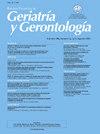在社区中老年人沉浸式接触虚拟现实时的网络眩晕体验和存在
Q3 Medicine
引用次数: 0
摘要
沉浸式虚拟现实(IVR)在日常生活中的影响力越来越大,并被用于医疗保健,以促进、预防和康复。这项研究评估了65岁以上接触这种技术的人的用户体验和晕屏症状。方法采用非概率方便抽样法。23名参与者(19名女性)参加了为期15-20分钟的IVR课程,每周两次,持续三周。采用健康、社会人口学、技术熟悉度、晕动病史、简易精神状态检查、老年抑郁量表、模拟病问卷和用户体验问卷。结果56.5%的患者报告使用技术困难;没有人表现出技术焦虑。所有参与者(100%)都认为眼镜易于使用;87%的人发现学习使用它们很简单,91.3%的人觉得没有帮助就能自信地使用它们。此外,95.7%的受访者认为IVR很有用。所有参与者都积极评价IVR眼镜的使用,并愿意再次使用或推荐它们。无症状、可忽略或轻微症状的感觉在第1期为95.7%,第3期为82.6%,第6期为95.7%,第2、4和5期为100%。结论sivr在老年人中接受度高,耐受性好,是一种很有前景的康复工具。对其实用性和易用性的热情和积极看法反映在对该技术的高度接受和重用意愿上。本文章由计算机程序翻译,如有差异,请以英文原文为准。
Experiencia y presencia de la cibermareo en la exposición inmersiva a la realidad virtual en adultos mayores que viven en la comunidad
Introduction
Immersive virtual reality (IVR) is gaining influence in daily life and is being used in healthcare for promotion, prevention, and rehabilitation. This study evaluated the user experience and the presence of cybersickness in individuals over 65 years old exposed to this technology.
Method
A non-probabilistic convenience sampling method was used. Twenty-three participants (19 women) attended IVR sessions lasting 15–20 minutes, twice a week for three weeks. Health, sociodemographic, technology familiarity, motion sickness history, the Abbreviated Mini-Mental State Examination, the Geriatric Depression Scale, the Simulator Sickness Questionnaire, and a user experience questionnaire were applied.
Results
The 56.5% reported difficulty using technology; none exhibited technological anxiety. All participants (100%) found the glasses easy to use; 87% found learning to use them simple, and 91.3% felt confident using them without assistance. Additionally, 95.7% found IVR useful. All participants positively valued the use of IVR glasses and were willing to use them again or recommend them. The perception of no, negligible, or minimal symptoms was 95.7% in session 1, 82.6% in session 3, 95.7% in session 6, and 100% in sessions 2, 4, and 5.
Conclusions
IVR is well-received and tolerated by older adults, making it a promising tool for rehabilitation. The enthusiasm and positive perception of its utility and ease of use were reflected in the high acceptance and willingness to reuse this technology.
求助全文
通过发布文献求助,成功后即可免费获取论文全文。
去求助
来源期刊

Revista Espanola de Geriatria y Gerontologia
Medicine-Medicine (miscellaneous)
CiteScore
1.90
自引率
0.00%
发文量
62
审稿时长
85 days
期刊介绍:
Una revista de gran prestigio por sus artículos originales de investigación y revisiones. Permite cubrir todas las áreas de la medicina pero siempre desde la atención al paciente anciano, y está presente en los más reconocidos índices internacionales.
 求助内容:
求助内容: 应助结果提醒方式:
应助结果提醒方式:


